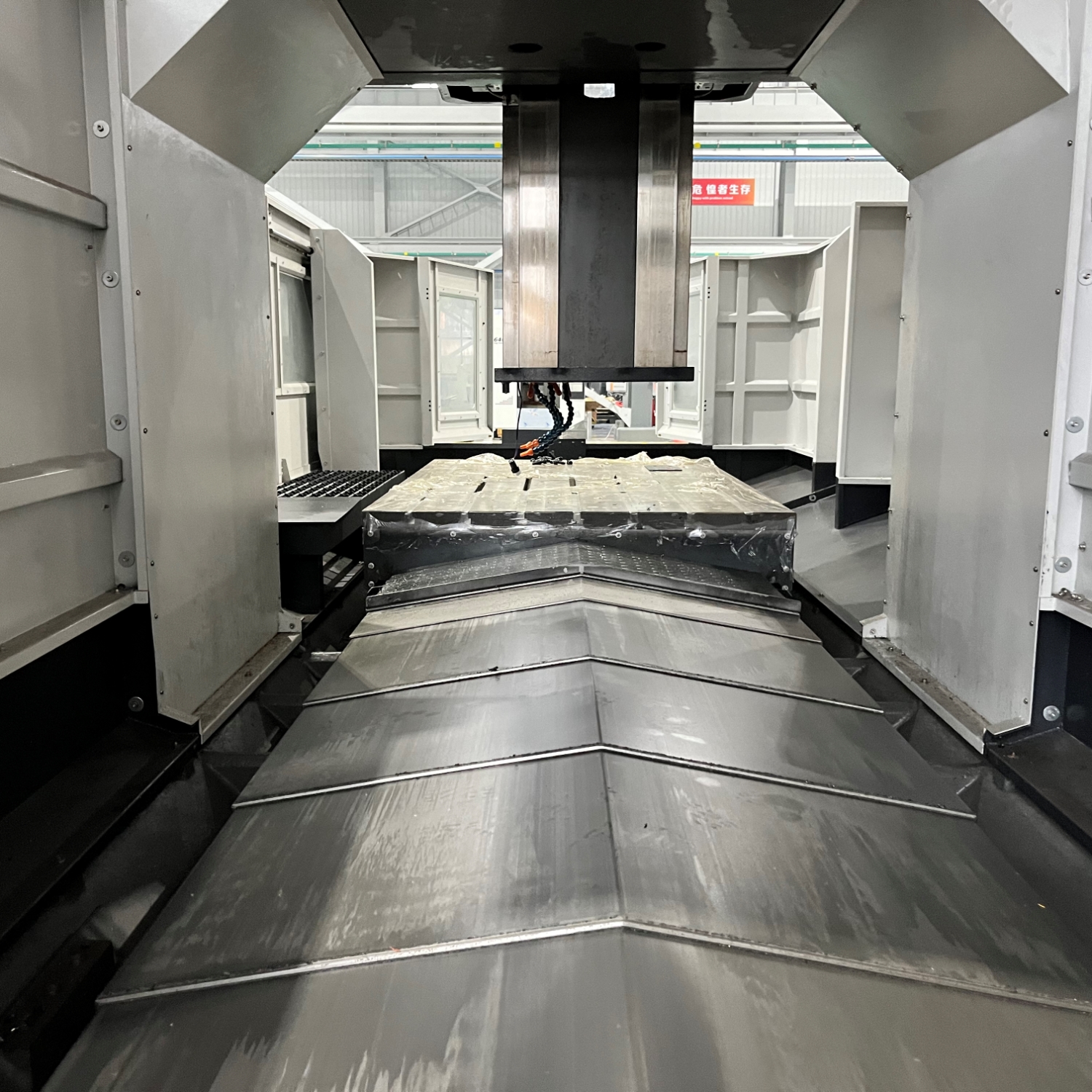With the rapid development of machining technology, CNC machining center have become indispensable equipment in modern manufacturing. Thanks to their efficient and precise machining capabilities, CNC machining center require high accuracy and safety during operation. Protective covers, as a key component, play a vital protective role. Steel plate protective covers are widely used in various CNC machining center due to their durability, excellent protection, and relatively low cost.
I. Main Functions and Roles of Steel Plate Protective Covers for CNC machining center
1. Protecting Mechanical Components
During machining, the high-speed rotating tools and workpieces generate a large amount of splatter, chips, and oil mist. Steel plate protective covers effectively block these substances, preventing damage to mechanical components, especially control systems and electrical parts.
2. Enhancing Operational Safety
High-speed rotating tools pose certain safety risks. Steel plate protective covers enclose the working area, isolating operators from the CNC machine and preventing accidental injuries.
3. Reducing Chip Dispersion
Chips generated during machining tend to scatter. Steel plate protective covers limit the spread of chips, collecting them in designated areas to maintain a clean and safe workshop environment.
4. Preventing Lubricant Contamination
Lubricants may splash or drip during machining, potentially polluting the workshop if not controlled. Steel plate protective covers effectively prevent lubricant splashes, keeping the workshop clean.
5. Extending Equipment Lifespan
Protective covers not only shield equipment from chips and oil contamination but also isolate dust and moisture from the external environment, reducing wear and extending equipment life.
II. Design Considerations for Steel Plate Protective Covers
1. Structural Design
The structure must meet the working environment and usage requirements of the machining center CNC, with sufficient strength and rigidity to withstand forces generated during high-speed machining. Common designs include fully enclosed, protective frame, and combined types, chosen based on the equipment shape and workspace.
2. Material Selection
Common materials include cold-rolled steel, stainless steel, and aluminum alloy:
Cold-rolled steel offers high strength and low cost but has poorer corrosion resistance.
Stainless steel has excellent corrosion resistance, suitable for industries with high cleanliness requirements.
Aluminum alloy is lightweight, corrosion-resistant, and aesthetically pleasing, ideal where equipment weight is a concern.
3. Openings and Adjustability
Protective covers usually have movable doors or hinged panels to facilitate operator adjustment, maintenance, and cleaning, while ensuring sealing and safety.
4. Heat Treatment and Surface Finishing
Surface treatments such as painting, galvanizing, and electrophoresis enhance corrosion and wear resistance, especially important in humid or corrosive environments to prevent rust and prolong service life.
III. Regular Inspection and Maintenance
To ensure steel plate protective covers maintain optimal protection, regular inspection and maintenance are essential. Key points include:
1. How to Inspect?
· Visual inspection for cracks, deformation, corrosion, or paint peeling.
· Check bolts, hinges, and slides for looseness or damage to ensure structural stability.
· Confirm sealing strips and closures are intact to prevent chip and oil mist leakage.
· Verify movable parts like doors and panels open and close smoothly without sticking.
2. How to Maintain?
· Regularly clean chips, oil, and dust from the cover surface using neutral cleaners and soft cloths; avoid strong acids or alkalis.
· Lubricate sliding rails and hinges to maintain flexibility and longevity.
· Repair and repaint areas with damaged coating or rust to prevent further corrosion.
· Recommend annual professional inspections to detect and address potential issues promptly.
Scientific inspection and maintenance not only extend the protective cover’s lifespan but also ensure the CNC machining center’s safe and stable operation, improving overall production efficiency.
As a core equipment in modern manufacturing, the stable operation of CNC milling center relies on the protection of steel plate covers. OTURN focuses on providing high-performance CNC machining center, all equipped with premium steel plate protective covers to ensure production safety and help enterprises achieve efficient and precise manufacturing.
Post time: May-20-2025








